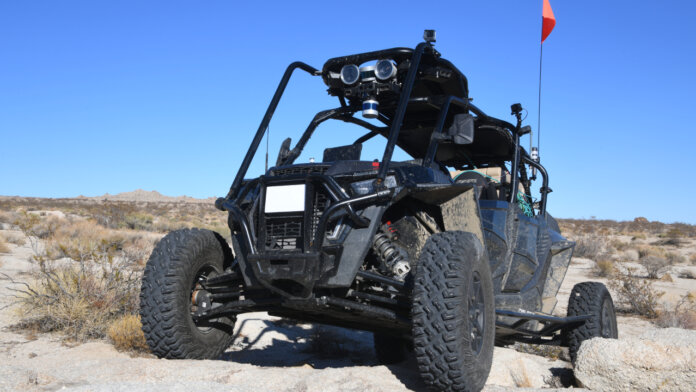The Robotic Autonomy in Complex Environments with Resiliency (RACER) programme being undertaken by the United States Defense Advanced Research Projects Agency.
In October 2021 three teams were chosen to work to improve the off-road autonomy of combat vehicles, particularly in terms of keeping up speed with manned combat vehicles in difficult terrain.
DAPRA is looking to develop then test technology that would allow unmanned ground vehicles (UGVs) to manoeuvre in challenging environments.
“RACER is intended to disruptively advance the integration and fielding of autonomy for robotic combat vehicles into the Army, Marine Corps, and Special Forces communities,” said Stuart Young, RACER programme manager in DARPA’s Tactical Technology Office.
The vehicles being used are high performance and all-terrain, and are fitted with sensing and computational capabilities. These include 360 degree range and image sensing using multiple LIDARs, stereo camera pairs, colour and infrared imaging cameras, RADAR, event sensors, and inertial measurement sensing.
The rigours of testing the vehicles have required that the computational graphical processing units (GPUs) are secured in an environmentally protected, shock/vibration proof, and thermally managed Electronics Box (E-Box) that’s specifically engineered for the demands of the RACER high speed, off-road terrain.
This system generates four terabytes of sensor data per hour which is used by supporting artificial intelligence, machine learning-based autonomy algorithms and stack approaches required to allow the vehicles to operate in such challenging circumstances. Integration was provided by Carnegie Robotics onto a Polaris RZR S4 1000 Turbo base drive-by-wire platform.
Four vehicles are being used, three of which are already with the RACER programme.
by Andrew Drwiega













